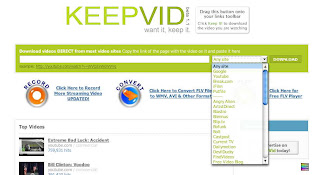I recently discovered a website called
Totally Optional Prompts which prompts you for poetry on a weekly basis, every Saturday, and then the links get added on Thursday. A weekly poetry carnival of sorts. I like reading and writing poetry. This week's theme, naturally, is
Thanksgiving.
I'd like to share one of my favorite classics for the holiday, and one of my own.
Thanksgiving - by Edgar A. Guest (©1917)
Gettin' together to smile an' rejoice,
An' eatin' an' laughin' with folks of your choice;
An' kissin' the girls an' declarin' that they
Are growin' more beautiful day after day;
Chattin' an' braggin' a bit with the men,
Buildin' the old family circle again;
Livin' the wholesome an' old-fashioned cheer,
Just for awhile at the end of the year.
Greetings fly fast as we crowd through the door
And under the old roof we gather once more
Just as we did when the youngsters were small;
Mother's a little bit grayer, that's all.
Father's a little bit older, but still
Ready to romp an' to laugh with a will.
Here we are back at the table again
Tellin' our stories as women an' men.
Bowed are our heads for a moment in prayer;
Oh, but we're grateful an' glad to be there.
Home from the east land an' home from the west,
Home with the folks that are dearest an' best.
Out of the sham of the cities afar
We've come for a time to be just what we are.
Here we can talk of ourselves an' be frank,
Forgettin' position an' station an' rank.
Give me the end of the year an' its fun
When most of the plannin' an' toilin' is done;
Bring all the wanderers home to the nest,
Let me sit down with the ones I love best,
Hear the old voices still ringin' with song,
See the old faces unblemished by wrong,
See the old table with all of its chairs
An' I'll put soul in my Thanksgivin' prayers.
Guest's sentimental poetry has been parodied much over the years, but there are moments that are perfect for sentimentality, and Thanksgiving is one of them.
I wrote the following poem several months ago -- for Passover. But it mentions Thanksgiving, and may humor those who aren't enthused about Guest's sentimentality. The contents are true, though the name of the relative has been changed. If he discovered this poem though, I think he'd find it humorous, as he has always been able to laugh at himself, and he would know I'm laughing too.
Harold's Habit
Harold has a habit
Of ruining holidays.
Every Thanksgiving
He mourns the Native Americans.
He used to mourn the turkeys too,
But he stopped doing that
When he learned to his horror
It was healthier for his blood-type
To eat meat.
This Passover he declared,
While eating the turkey in front of him,
The entire family is descended
From mass murderers.
He had his DNA sampled
By National Geographic
And our family’s ancestors
started agriculture,
Which he now equates
To destroying the environment.
Of course, he used to think
It was morally imperative
To eat vegetables;
Not to hunt bison.
----
Harold will be at the Thanksgiving table on Thursday, and I'm looking forward to it, because he's family.









 It was the early-1930s, Great Depression, my grandfather and a couple friends hopped a train in St. Louis and rode it to California. Upon arriving in California, my grandfather saw a large building with the name Newmark on it. He had no idea he had relatives in California. So, naturally, he walked inside and asked for a job. And they told him to go away. They were probably nice about it, but it was the Great Depression, and there were no jobs available. Not even for potential distant cousins. No jobs were found, so the friends hopped another train, and rode back to St. Louis. My grandfather married my grandmother, had a successful career as a lawyer and a judge, and all was for the best in the best of all possible worlds (to quote Voltaire). However, when he heard about a family history book entitled, California Family Newmark, he bought a copy.
It was the early-1930s, Great Depression, my grandfather and a couple friends hopped a train in St. Louis and rode it to California. Upon arriving in California, my grandfather saw a large building with the name Newmark on it. He had no idea he had relatives in California. So, naturally, he walked inside and asked for a job. And they told him to go away. They were probably nice about it, but it was the Great Depression, and there were no jobs available. Not even for potential distant cousins. No jobs were found, so the friends hopped another train, and rode back to St. Louis. My grandfather married my grandmother, had a successful career as a lawyer and a judge, and all was for the best in the best of all possible worlds (to quote Voltaire). However, when he heard about a family history book entitled, California Family Newmark, he bought a copy.







